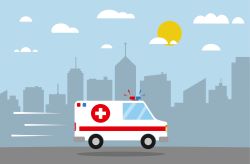Taking Action During Medical Emergencies in Healthcare Practices
Laura M. Cascella, MA, CPHRM
Thoroughly preparing for medical emergencies requires time and resources, but the results can prove significant. When an emergency occurs, healthcare providers and staff members must be ready to quickly implement their emergency response plans. Failure to do so might result in significant consequences for the individual having the emergency.
Even if providers and staff are not experienced with, or highly knowledgeable of, the type of emergency taking place, the common goal is to “manage the patient’s care until he or she recovers fully or until help arrives.”1 A dual strategy to emergency response is recommended that involves a medical response and a communication response that occur simultaneously.2
| PABCD |
|---|
| The PABCD approach to emergency response involves:
|
In terms of medical response, a critical aspect of managing the patient’s care is ensuring that they are receiving a sufficient supply of oxygenated blood to vital organs — a goal that is supported through the delivery of basic life support (BLS). Various emergency preparedness resources also recommend following the PABCD approach (see box).
More specific algorithms and protocols related to managing certain types of emergencies — such as sudden cardiac arrest, anaphylaxis, bronchospasm, swallowed instruments or devices, chest pain, shock, seizures, etc. — can be obtained through specialty organizations, professional associations, and state and local healthcare resources.
| Calling for Help |
|---|
| A prompt call to emergency medical services (EMS) is one of the first communication steps in managing a medical emergency. The caller should be ready to provide essential information, such as:
Assign a staff member to meet EMS responders as they arrive and direct them to the patient’s location. |
While the medical response is occurring, various communication activities also should take place, including calling for emergency help, directing staff, obtaining information from family members or caregivers and providing them with updates (if applicable), calling the hospital emergency department to alert staff of the situation, and documenting the sequence of events as it takes place.5
Post emergency phone numbers — such as the numbers for EMS, the local hospital, poison control, etc. — in a visible location to facilitate the response process. If the caller has to dial a prefix to activate an outside line, note that information as well. Periodically, an assigned staff member should check the list of emergency numbers for accuracy.
Although the number of activities involved in an emergency response and the rapid succession with which they must occur might seem indicative of chaos, proactive planning, training, and drilling will help prepare healthcare providers and staff to react quickly and efficiently on the patient’s behalf.
To learn more about medical emergency preparedness, see Managing Medical Emergencies: A Three-Pronged Approach for Healthcare Practices.
Endnotes
1 Haas, D. A. (2010). Preparing dental office staff members for emergencies: Developing a basic action plan. Journal of the American Dental Association, 141(Suppl 1), 8S–13S.
2 Sempowski, I. P. (2002, September). Dealing with office emergencies: Stepwise approach for family medicine. Canadian Family Physician, 48, 1464–1472.
3 Haas, Preparing dental office staff members for emergencies; Haas, D. A. (2006). Management of medical emergencies in the dental office: Conditions in each country, the extent of treatment by the dentist. Anesthesia Progress, 53, 20–24; Sempowski, Dealing with office emergencies; Reed, K. L. (2010). Basic management of medical emergencies: Recognizing a patient’s distress. Journal of the American Dental Association, 141(Suppl 1), 20S–24S.
4 Haas, Preparing dental office staff members for emergencies.
5 Sempowski, Dealing with office emergencies.

